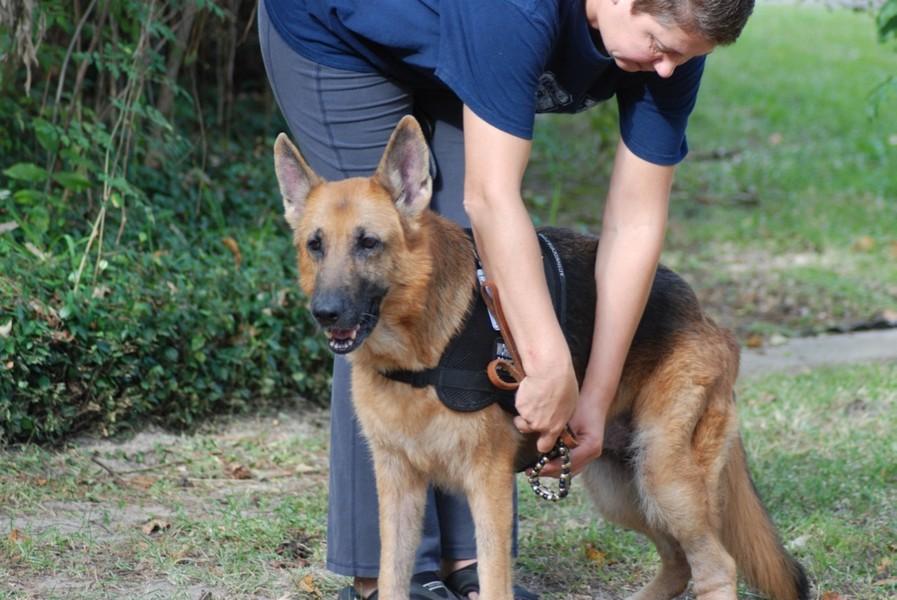Service animals contribute to society
October 27, 2016
Jeremiah Robinson always knew he was different from other kids. He couldn’t play like his older sister Samantha or go over to his friends’ house for sleepovers. However, that all changed when a 4-year-old golden retriever lab mix named Sweet Pea came into his life.
Jeremiah has epilepsy, a condition that causes sporadic seizures. This is where Sweet Pea comes in. She is a seizure alert dog that alerts Jeremiah’s mother, Theresa Robison, when Jeremiah is having a seizure.
Robinson, a math alternate teacher at K-Park, says Sweet Pea has given her son the independence he needed. Before Sweet Pea, Robison would have to keep a very watchful eye over Jeremiah.
“He could never be playing upstairs unless I was upstairs. He could never be in the backyard unless I was in the backyard,” Robison said. “I would basically be half asleep all night listening and if he would move I would get up and look because there was no sleep. There was no rest. There was no break.”
Those who need a service dog have to meet special requirements such as being physically able to care for the dog, being able to financially support the dog, and having a home situation compatible with a dog.
It takes about $20,000 to get the service dog already trained and ready to work. There are approximately 387,000 service dogs nationwide according to Service Dog Central. Service dogs are used for people with visual and hearing impairments, mental illnesses such as PTSD, seizure disorders, mobility impairment, diabetes and allergies.
Dianne Kraxberger has dedicated her life to the North Houston branch of Guide Dogs for The Blind. According to her, it takes a lot of dedication to raise a puppy 24 hours a day, seven days a week and 365 days a year.
Kraxberger wishes that people would stop mislabeling dogs as service dogs. She’s afraid that as service animals grow in numbers, it will get harder and harder for people to get a legitimate service dog.
“There are many places on the internet where you can buy a jacket and a certificate and claim any animal is your ‘service’ animal or emotional support animal,” Kraxberger said.
It is also a problem when people are discriminated against for having service dogs. The law in Texas prohibits any establishment from not admitting people with a service dog into a public place. However, this hasn’t stopped some from trying.
Karol Woodward has experienced this firsthand with her hearing disability German Shepherd, Gracie. She once stayed at a hotel that charges fees for pets and tried to get her to pay the fee for Gracie, which is against the law.
“They insisted I pay the fee for my service dog,” Woodward said. “I refused to pay the fee and simply gave them the number for the U.S Department of Justice, which handles service dog related offenses.”
Jeremiah, who is now 8, was only 4 when he got Sweet Pea, who alerts the family by barking every time Jeremiah has a seizure.
“Anytime Sweet Pea barks my heart stops. It means my baby boy is in trouble,” Robison said. “I sprint to wherever they are, take care of him, and then celebrate with Sweet Pea for a job well-done.”
Jeremiah now has Sweet Pea to catch him if he falls.
“She is his rock,” Robison said. “He knows if there’s someone to fall back on that this girl is going to catch me.”













